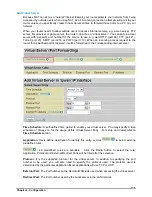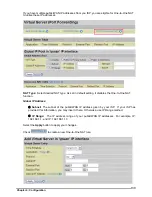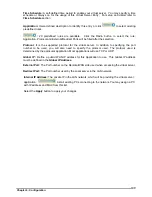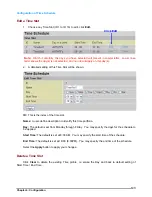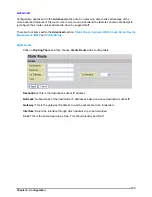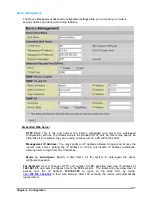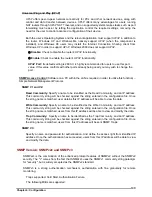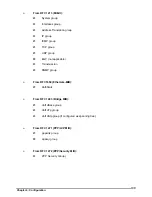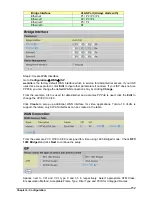
Chapter 4: Configuration
148
Universal Plug and Play (UPnP)
UPnP offers peer-to-peer network connectivity for PCs and other network devices, along with
control and data transfer between devices. UPnP offers many advantages for users running
NAT routers through UPnP NAT Traversal, and on supported systems makes tasks such as port
forwarding much easier by letting the application control the required settings, removing the
need for the user to control advanced configuration of their device.
Both the user’s Operating System and the relevant application must support UPnP in addition to
the router. Windows XP and Windows Me natively support UPnP (when the component is
installed), and Windows 98 users may install the Internet Connection Sharing client from
Windows XP in order to support UPnP. Windows 2000 does not support UPnP.
Disable:
Check to disable the router’s UPnP functionality.
Enable:
Check to enable the router’s UPnP functionality.
UPnP Port:
Its default setting is 2800. It is highly recommended for users to use this port
value. If this value conflicts with other ports already being used you may wish to change the
port.
SNMP Access Control
(Software on a PC within the LAN is required in order to utilize this function) –
Simple Network Management Protocol.
SNMP V1 and V2:
Read Community:
Specify a name to be identified as the Read Community, and an IP address.
This community string will be checked against the string entered in the configuration file. Once
the string name is matched, user obtains this IP address will be able to view the data.
Write Community:
Specify a name to be identified as the Write Community, and an IP address.
This community string will be checked against the string entered in the configuration file. Once
the string name is matched, users from this IP address will be able to view and modify the data.
Trap Community:
Specify a name to be identified as the Trap Community, and an IP address.
This community string will be checked against the string entered in the configuration file. Once
the string name is matched, users from this IP address will be sent SNMP Traps.
SNMP V3:
Specify a name and password for authentication. And define the access right from identified IP
address. Once the authentication has succeeded, users from this IP address will be able to view
and modify the data.
SNMP Version: SNMPv2c and SNMPv3
SNMPv2c is the combination of the enhanced protocol features of SNMPv2 without the SNMPv2
security. The "c" comes from the fact that SNMPv2c uses the SNMPv1 community string paradigm
for "security", but is widely accepted as the SNMPv2 standard.
SNMPv3 is a strong authentication mechanism, authorization with fine granularity for remote
monitoring.
Traps supported: Cold Start, Authentication Failure.
The following MIBs are supported:



